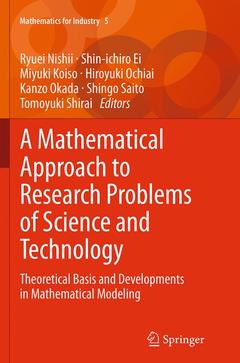Description
A Mathematical Approach to Research Problems of Science and Technology, Softcover reprint of the original 1st ed. 2014
Theoretical Basis and Developments in Mathematical Modeling
Mathematics for Industry Series, Vol. 5
Coordinators: Nishii Ryuei, Ei Shin-ichiro, Koiso Miyuki, Ochiai Hiroyuki, Okada Kanzo, Saito Shingo, Shirai Tomoyuki
Language: English
Subject for A Mathematical Approach to Research Problems of Science...:
Publication date: 08-2016
Support: Print on demand
Publication date: 07-2014
507 p. · 15.5x23.5 cm · Hardback
Description
/li>Contents
/li>Comment
/li>
This book deals with one of the most novel advances in mathematical modeling for applied scientific technology, including computer graphics, public-key encryption, data visualization, statistical data analysis, symbolic calculation, encryption, error correcting codes, and risk management. It also shows that mathematics can be used to solve problems from nature, e.g., slime mold algorithms.
One of the unique features of this book is that it shows readers how to use pure and applied mathematics, especially those mathematical theory/techniques developed in the twentieth century, and developing now, to solve applied problems in several fields of industry. Each chapter includes clues on how to use "mathematics" to solve concrete problems faced in industry as well as practical applications.
The target audience is not limited to researchers working in applied mathematics and includes those in engineering, material sciences, economics, and life sciences.

